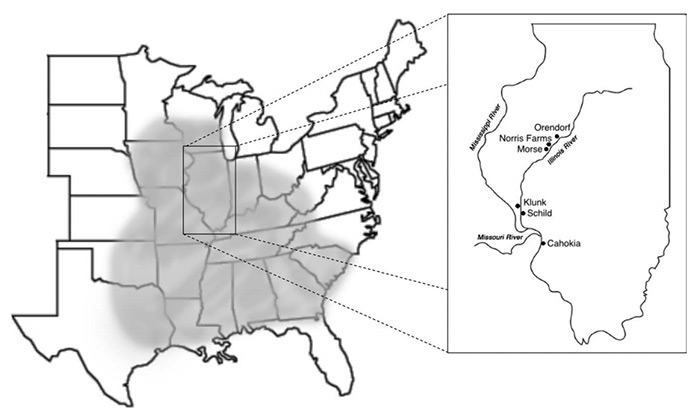DNA samples from North Americans who lived more 1,000 years ago in Illinois reveal that rapid cultural changes came from acceptance of new practices rather than from a population influx into the region, according to a new study from The University of Texas at Austin and Indiana University.

Seeking an explanation for a major cultural transition that occurred between the Late Woodland (A.D. 400-1050) and Mississippian (A.D. 1050-1500) periods in the Lower Illinois River Valley, researchers examined the mitochondrial DNA of 39 individuals at a site in western Illinois and compared it with samples from other sites in the region. Mitochondrial DNA is passed from mother to child and allows researchers to trace maternal relationships and female migration. The researchers wanted to know whether the cultural transition in the Lower Illinois River Valley was caused by migration of a new group into the region, or whether the population in place adopted new cultural practices through existing social networks.
“This cultural transition, seen across the Midwest, is one of the most significant events in North American prehistory,” says Jennifer Raff, a research fellow in UT Austin’s Department of Anthropology and one of the two lead authors of the study. “It involved changes to social and political structure, the adoption of intensive maize agriculture, changes to mortuary practices and the development of new art, technologies and religious practices. These cultural changes first appeared at the nearby site of Cahokia, just east of present-day St. Louis, so we wanted to know if migration from there had brought the changes to the Lower Illinois River Valley.”
The study, to be published in the American Journal of Physical Anthropology, was conducted by a team of researchers at Indiana University and UT Austin. The UT researchers included Deborah Bolnick, associate professor in the Department of Anthropology and the Population Research Center; Austin Reynolds, a graduate student in the Department of Integrative Biology; and Raff. The team also included Della Cook and Frederika Kaestle, professor and associate professor of anthropology, respectively, at Indiana University Bloomington.
“This study provides valuable insights into how sites peripheral to the largest Mississippian settlements incorporated new cultural practices during this transitional period,” Reynolds says. “The local people clearly adopted Mississippian practices, suggesting that cultural shifts in the archaeological record are not always caused by replacement of the previous inhabitants of a region.”
Bolnick says more research is needed to determine whether the findings in the Lower Illinois River Valley are representative of the process of culture change across eastern North America during the Late Woodland-Mississippian transition, or whether this change was triggered by acculturation in some regions and migration in others.
In the future, Reynolds says, it will be important to obtain information from other regions of the genome.
“Studying the paternally inherited Y chromosome, which is passed down from father to son, would allow us to test for male migration during this cultural transition and further refine our models of demographic change in the region. Previous work done in our lab has suggested that in the past, the movement of males and females may have been very different in the eastern United States.”
For more information, contact:David Ochsner, College of Liberal Arts, 512-626-0788; Jennifer Raff, Department of Anthropology, College of Liberal Arts, 801-580-7970.


















Comments